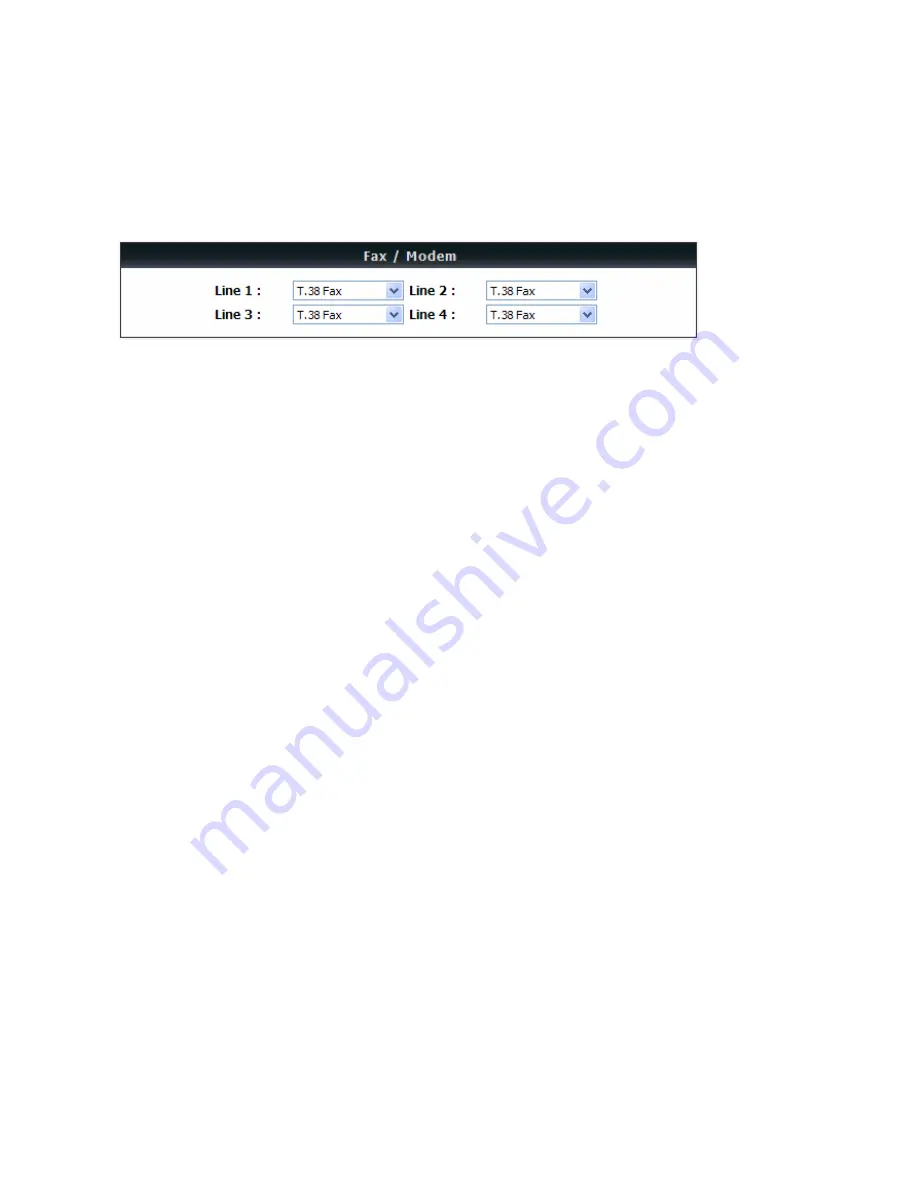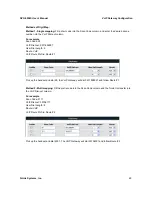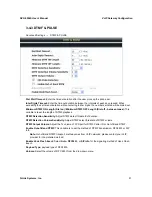
DVG-5004S User’s Manual
VoIP Gateway Configuration
D-Link Systems, Inc.
39
3-3-8 FAX
General Settings
→
FAX
Disable -
Select it if you are not sending fax, but it is still accepted fax by the VoIP Gateway.
T.38 Fax -
Select it if you are using T.38 as the protocol for fax transmission. T.38 is used for reliable
and efficient facsimile transmission over network. It transmits and receives FAX waveform (relaying)
over the codec negotiated during call setup this bandwidth consumed is lowered. T.38 protocol also
supports redundancy to get better FAX quality.
T.30 Fax -
Select it if you are using T.30 as the protocol for fax transmission. It transmit FAX signal as
voice thus uncompressed G.711 would be the choice. (G.726 also works but not recommended). Due
to this nature, T.30 always requires a SDP change (change of codec within a session, SIP Re-Invite
required) after FAX tone detected by the callee. It will consume more network resources and will affect
transmission quality. The VoIP Gateway is still able to change the protocol from T.38 to T.30 if the
called party uses T.38 for fax transmission.
T.30 Fax/Modem -
Select it if you use it as the protocol for transmission of fax/modem over IP
network.
T.30 Only -
Select it if you are using G.711 a-law or G.711 u-law for fax transmission. The VoIP
Gateway won’t accept T.38 for fax transmission.
T.38 Native -
Select it if you are only using T.38 for fax transmission.
T.30 V.152 –
As GW detect FAX tone, it will change RTP codec to be T.30 codec directly without
sending Re-Invite to change codec.
Note:
When a fax tone is detected from the call, the VoIP Gateway will automatically switch from voice
mode to fax mode. Hence, the fax settings will be temporarily applied to a specific port which detects the fax
tones, instead of its default voice settings.
















































